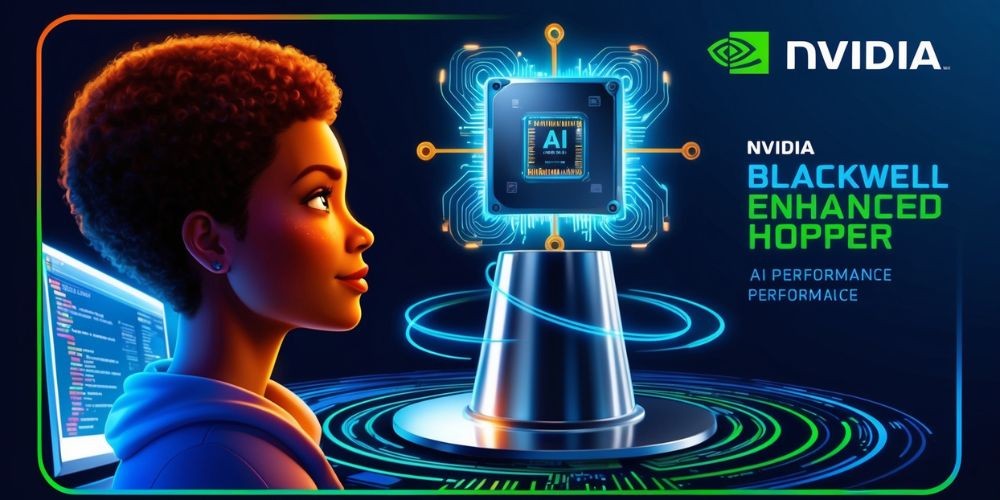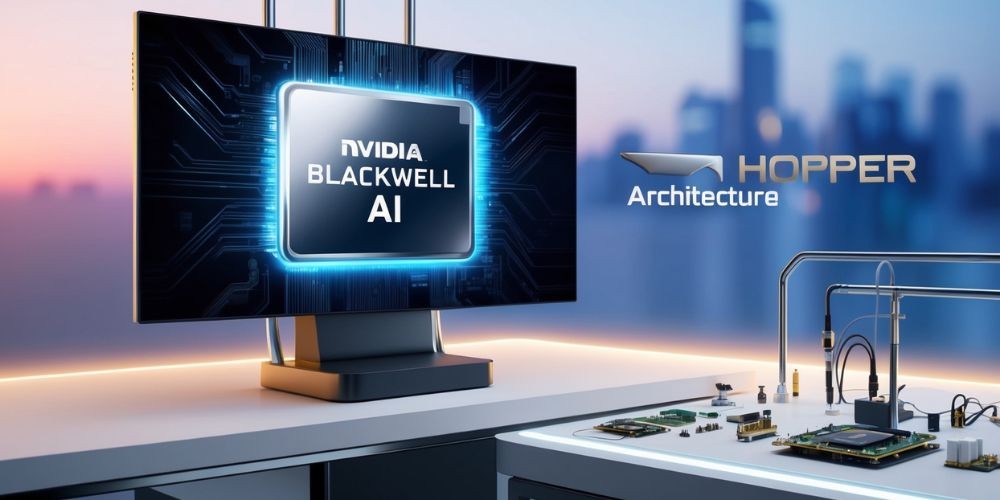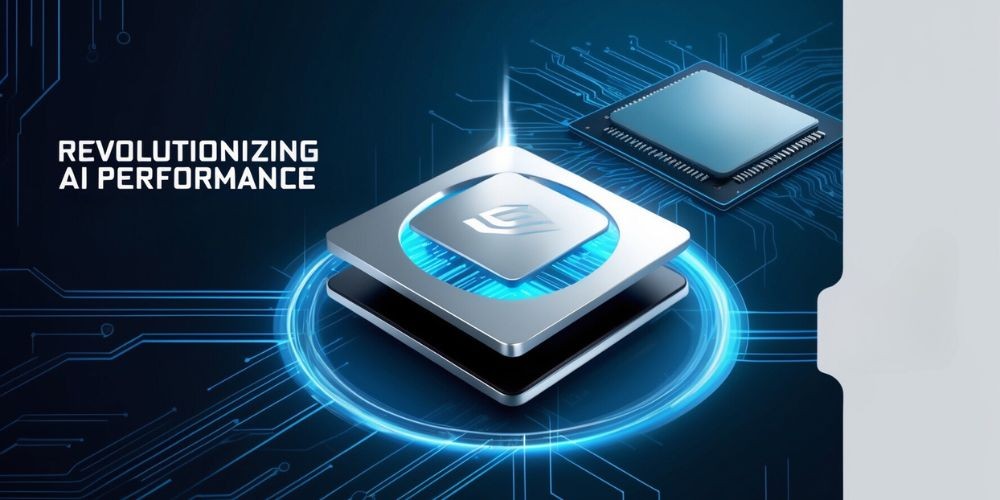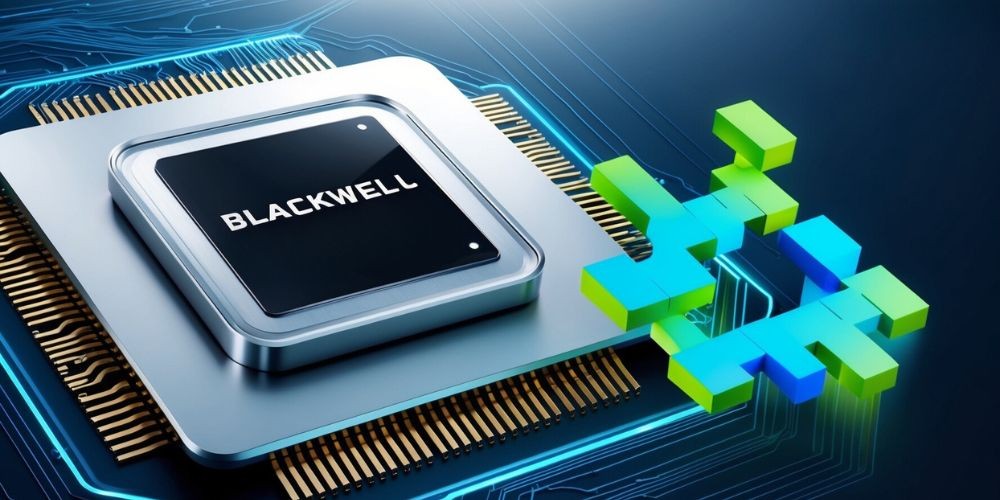Revolutionizing AI Performance: The Impact of NVIDIA's Blackwell and Enhanced Hopper Chips
- Sep 15, 2024
- 0

NVIDIA has once again set the stage for innovation in the realm of artificial intelligence with the debut of its Blackwell AI chips at the recent MLPerf v4.1 benchmark event. Building on an already impressive legacy, these chips have not only shattered performance records but also highlighted NVIDIA's ongoing commitment to delivering cutting-edge technology. In this article, we will explore the implications of the Blackwell chips’ release, the enhanced performance of Hopper series chips, and how software optimizations contribute to NVIDIA's dominance in the AI landscape.
A New Benchmark in AI Performance
NVIDIA’s Blackwell AI chips achieved record-breaking performance metrics at the MLPerf v4.1 benchmarks, where they outperformed every other AI solution in various categories. The benchmarks tested ranged from dense large language models (LLMs) such as Llama 2 70B to complex tasks such as medical image segmentation and object detection. The results were impressive: Blackwell GPUs posted a performance increase of up to four times compared to their predecessors, setting a new standard for AI chips.

This impressive feat positions the Blackwell architecture as a formidable entry in the market, especially with the chips expected in data centers later this year. The benchmarks recorded by the Blackwell chips included:
- Llama 2 70B (Dense LLM)
- Mixtral 8x7B MoE (Sparse Mixture of Experts LLM)
- Stable Diffusion (Text-to-Image)
- DLRMv2 (Recommendation)
- BERT (NLP)
- RetinaNet (Object Detection)
- GPT-J 6B (Dense LLM)
- 3D U-Net (Medical Image Segmentation)
- ResNet-50 v1.5 (Image Classification)
Performance Uplift with Blackwell
Diving deeper into the performance enhancements, the Blackwell GPUs demonstrated astounding capabilities in various scenarios. For instance, a single Blackwell GPU achieved a throughput of 10,756 Tokens/second in server workloads while showcasing a performance ramp of 3.7x in offline scenarios, reaching 11,264 Tokens/second. This highlights the potential for Blackwell GPUs in high-demand applications where speed and efficiency are critical.

Another significant advancement reported by NVIDIA was the first publicly measured performance using FP4 on Blackwell GPUs, underscoring their leading-edge technology.
The Resilient Hopper Architecture
While the spotlight is on Blackwell, NVIDIA’s Hopper chips—specifically the H100 and H200 models—are also experiencing continual enhancements. Optimization efforts for both hardware and software have yielded substantial performance improvements across various benchmarks. For instance, the Hopper H200 configuration, comprising eight H200 GPUs, recorded 34,864 Tokens/second in offline setups—a 50% uplift over the prior H100 solution.
The architecture demonstrates the company's commitment to maintaining its competitive edge. Furthermore, the H100 consistently outperforms AMD's MI300X in various AI workloads, showcasing NVIDIA’s continued preeminence in the industry. Notably, enhancing memory capacity by 80% and increasing bandwidth by 40% also contributes to the impressive gains of the Hopper chips.
The Mysterious Absence of Competitors

In the latest MLPerf benchmarks, AMD's MI300X showed conspicuous gaps. In tests like the Mixtral 8x7B, NVIDIA's H100 and H200 achieved output rates of 59,022 and 52,416 Tokens/second, respectively. Conversely, AMD's absence from these critical benchmarks raises questions about their capacity to compete effectively in the current landscape. Similarly, in Stable Diffusion XL, NVIDIA’s Hopper AI chips similarly excelled with performance boosts of up to 27%, leaving AMD’s solutions unverified in these specific workloads.
The Role of Software in AI Infrastructure
It is worth highlighting that the advancements in AI are not solely a result of hardware improvements. Software plays an equally significant role—if not a more critical one. NVIDIA recognizes this dynamic and leverages its robust ecosystem of software to ensure the optimizations are fully realized on their hardware. For institutions investing in AI infrastructure, the synergy between hardware and software is vital. The right software can unlock the full potential of powerful hardware, enabling unprecedented performance in real-world applications.
A Comprehensive Ecosystem

NVIDIA is set to enhance its ecosystem further as it rolls out the HGX H200 across its various partners. The availability of these cutting-edge chips underscores NVIDIA's strategy to cater not only to major enterprises but also to smaller organizations looking to harness the power of AI. With the comprehensive software stack and robust hardware offering, NVIDIA is well-prepared to meet the demands of a rapidly evolving AI landscape.
Future Directions and Edge Solutions
NVIDIA's focus is not limited to its flagship Blackwell and Hopper architectures. Their commitment to enhancing edge computing solutions—such as the Jetson AG Orin series—demonstrates a keen interest in extending AI capabilities beyond traditional data centers. With reported boosts of sixfold in performance since MLPerf v4.0 submissions, these edge solutions are becoming increasingly critical for general AI workloads, signifying a growing trend towards distributed computing and localized intelligence.
Conclusion: Paving the Path Forward
The evolution of NVIDIA’s AI chips marks a significant milestone in the history of artificial intelligence performance. The Blackwell architecture’s record-breaking debut alongside the continued optimization of the Hopper series portrays a company on the cutting edge of technology. As AI workloads become more complex and demanding, NVIDIA’s holistic approach—merging high-performance hardware with sophisticated software solutions—positions it as a leader ready to guide industries through the revolutionary era of AI.
With the anticipation surrounding Blackwell’s public launch and the sustained dominance of Hopper, NVIDIA is set to influence the future of AI and define what is attainable in the field of high-performance computing. The landscape is shifting, and as such, enterprises must prepare to adapt to the latest advancements to stay relevant and successful in a highly competitive market.